
Roots
When one gazes upon a strand of hair, particularly one that coils and bends with ancestral memory, do we truly perceive its entire story? Do we see beyond surface aesthetics into the deep currents of its past, the wisdom of generations etched into its very form? For those whose lineage traces back to the continent of Africa, hair has always been a living archive, a repository of history, status, and spirit. It is within this profound understanding that we begin to unravel a fundamental question ❉ Do traditional African hair practices influence modern beauty standards?
To approach this query requires stepping back, allowing the echoes from ancient sources to guide our contemporary vision, tracing the subtle, yet powerful, ways ancestral care rituals and forms have shaped the present. This journey delves not merely into superficial trends, but into the inherent science and cultural declarations held within textured hair itself.
Our exploration begins with the very architecture of hair, specifically textured hair, a marvel of biological design. The unique geometry of a tightly coiled strand, its elliptical cross-section, and the distinctive way its cuticle layers are arranged, all play a role in its inherent characteristics, from its strength to its capacity for moisture retention. African hair, often described as having a tight, coiled, spring-like structure, exhibits particular properties at the microscopic level. Researchers have noted a higher lipid content within the medulla, cortex, and cuticle of African hair compared to other hair types, suggesting a distinct physiological makeup that impacts its interaction with moisture and external factors (Coderch et al.
2021). This elemental biology, though understood through modern scientific lenses, speaks to a deeper truth ❉ that the hair itself, in its natural, inherited state, dictated forms of care and styling millennia ago, fostering practices that worked in concert with its intrinsic properties. These ancient observations, perhaps without the benefit of microscopes, led to regimens of profound understanding, built on intuition and generational experience.
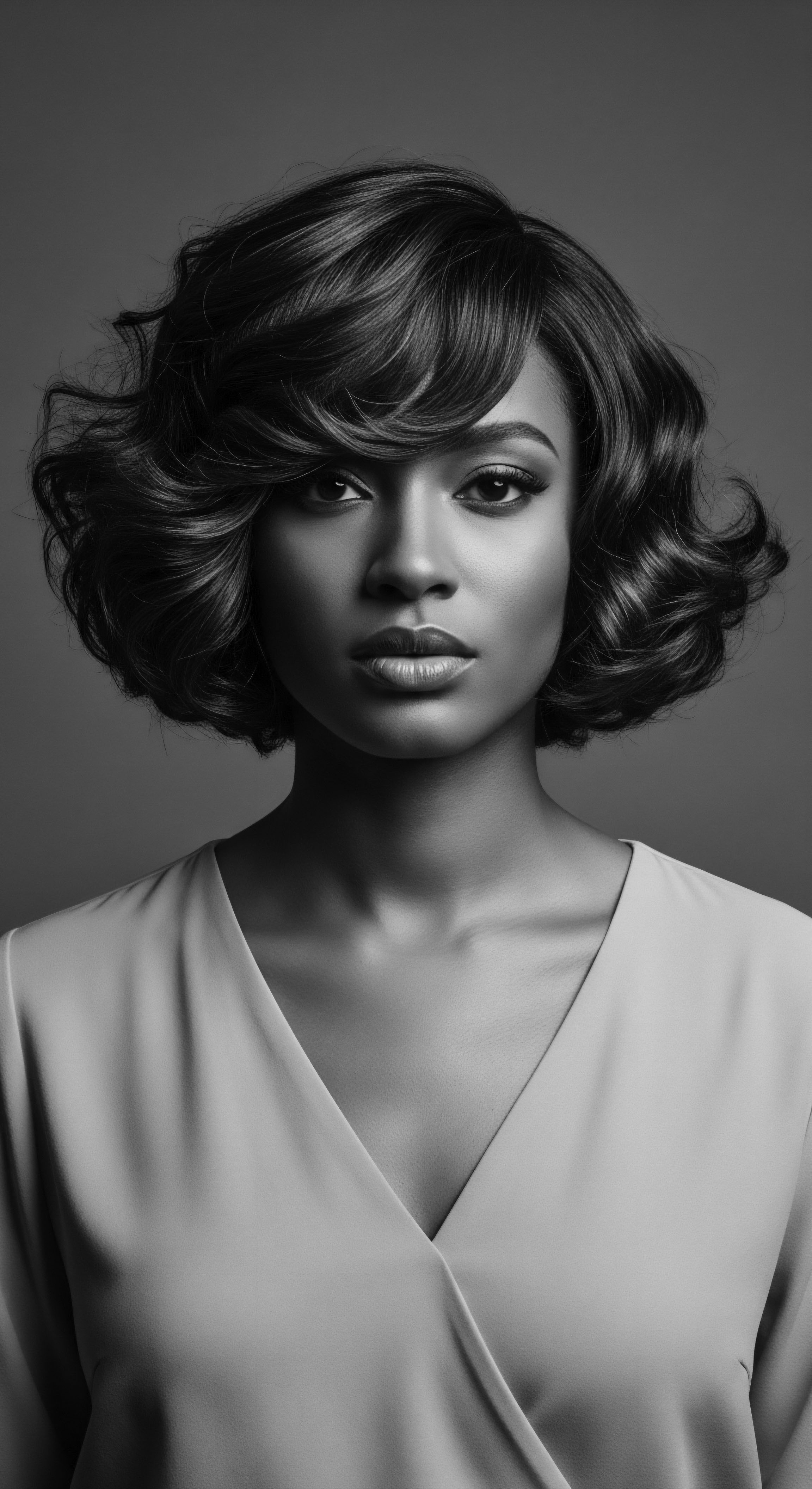
Anatomy of Textured Hair ❉ A Heritage Perspective
The science of hair, particularly for textured strands, reveals a structure deeply adapted to its environment. Afro-textured hair, believed to have evolved in Africa as a protective mechanism against intense ultraviolet radiation, possesses distinct morphological features. The way the hair shaft twists and turns upon itself, for instance, provides a natural barrier, allowing for air circulation to the scalp while shielding it from direct sun exposure. This inherent design influenced early African communities to develop methods of care that celebrated and supported this natural resilience.
Hair, particularly textured hair, is a living testament to ancestral wisdom and environmental adaptation.
The follicular architecture of African hair is also distinct. Unlike straighter hair types, the hair follicles producing tightly coiled strands are often more curved, contributing to the spiraling pattern of the hair shaft as it grows. This curvature, alongside the bilateral distribution of cells within the hair cortex, is a key determinant of curliness (Bryson et al. 2020).
This understanding helps explain why traditional practices often focused on managing the hair’s natural inclination to coil, twist, and sometimes knot, rather than attempting to fundamentally alter its inherited form. Early grooming methods, therefore, were not about imposition, but about working with the hair’s natural inclination, enhancing its protective qualities and aesthetic possibilities.

From Nomenclature ❉ Classifying Textured Hair’s Heritage
Modern classification systems for textured hair, while sometimes perceived as clinical, echo a historical need to categorize and understand hair’s diverse expressions. Systems measuring curl parameters like curve diameter, curl index, and number of waves attempt to quantify the very qualities that have always marked textured hair as unique. However, older, informal systems, often embedded in communal understanding, recognized hair not just by its curl pattern but by its appearance, its condition, and its symbolic value within society. The very language used to describe hair in ancient African societies carried significant meaning, often linked to status, age, or tribal identity.
The terminology used today, like “kinky” or “coily,” attempts to describe hair’s macroscopic appearance, yet it is essential to remember that throughout history, the perception of Afro-textured hair has been complex. During colonial periods and the transatlantic slave trade, there were deliberate efforts to strip African people of their identity, which included the forced shaving of hair and the negative framing of its texture. This historical denigration contrasts sharply with the pre-colonial reverence for hair.
- Coiled Hair ❉ Known for its tightly wound, spring-like structure, often appearing densely packed.
- Twisted Strands ❉ Refers to hair that naturally spirals upon itself, forming distinct patterns.
- Spring-Like Texture ❉ Describes the elasticity and rebound of natural African hair, allowing for volume.
Understanding these foundational aspects of textured hair provides the lens through which we can perceive the ongoing influence of traditional African hair practices on contemporary beauty standards. The science validates the wisdom of ancient methods, highlighting hair’s inherent resilience and the profound impact of practices that work in harmony with its natural state.
Hair growth cycles, too, were implicitly understood through generations of observation. While modern science details anagen, catagen, and telogen phases, traditional societies recognized periods of growth, rest, and shedding. Hair was always growing, though not always noticeably to the eye. This understanding contributed to the development of protective styles and care rituals that minimized breakage, ensuring length retention and overall hair health, emphasizing longevity and communal well-being over rapid change.

Ritual
The essence of traditional African hair practices lay not only in their aesthetic appeal but in their deeply communal and spiritual foundations. Hair was a language, a chronicle of identity, a connection to the divine. This deep heritage, rooted in shared rituals and ancestral knowledge, has undeniably shaped the landscape of modern beauty standards, perhaps more subtly in its ethos than in overt replication of styles. The artistry involved, the tools employed, and the transformative power ascribed to hair care rituals from pre-colonial Africa carry echoes that resonate even today.
In ancient African societies, hairstyles were far more than a simple adornment. They served as intricate systems of communication, declaring one’s social status, age, marital standing, tribal affiliation, wealth, and even religious beliefs. The process of hair styling often took hours, even days, becoming a significant social event, a cherished opportunity for bonding among family and friends. This communal aspect of hair care, where wisdom was passed from elders to younger generations, is a tender thread connecting past and present.
The Himba tribe in Namibia, for instance, used a mixture of clay and cow fat to create a unique hair paste that offered protection from the sun and aided in detangling, a practice rooted in their deep connection to the earth and their ancestors. This is a tangible example of ancestral care methods born from intimate environmental understanding and cultural meaning.

How Ancestral Styling Shapes Contemporary Looks?
Many contemporary styles celebrated in the beauty industry, particularly within the Black and mixed-race communities, trace their lineage directly to traditional African protective styling. Braids, twists, and locs, now global phenomena, have ancient roots stretching back thousands of years on the African continent. The earliest examples of braiding techniques date back to circa 3500 BCE in Nubia, present-day Sudan. These styles were not merely decorative; they were practical, helping to preserve hair and minimize damage from daily manipulation and environmental exposure.
African hair artistry, a language of identity and survival, continually informs modern styling.
Consider the ubiquitous cornrow. This Afro-centric style, dating as far back as 3000 BCE in the Horn and West Coasts of Africa, involves tightly woven braids close to the scalp, creating distinct patterns. During the transatlantic slave trade, these seemingly simple styles took on a powerful, subversive role ❉ enslaved African women, particularly rice farmers, braided rice seeds into their hair as a means of survival, and cornrows were used to create maps, guiding escape routes from plantations. This historical example powerfully illuminates how traditional African hair practices became tools of resistance and survival, a profound legacy that continues to resonate as these styles are worn today.
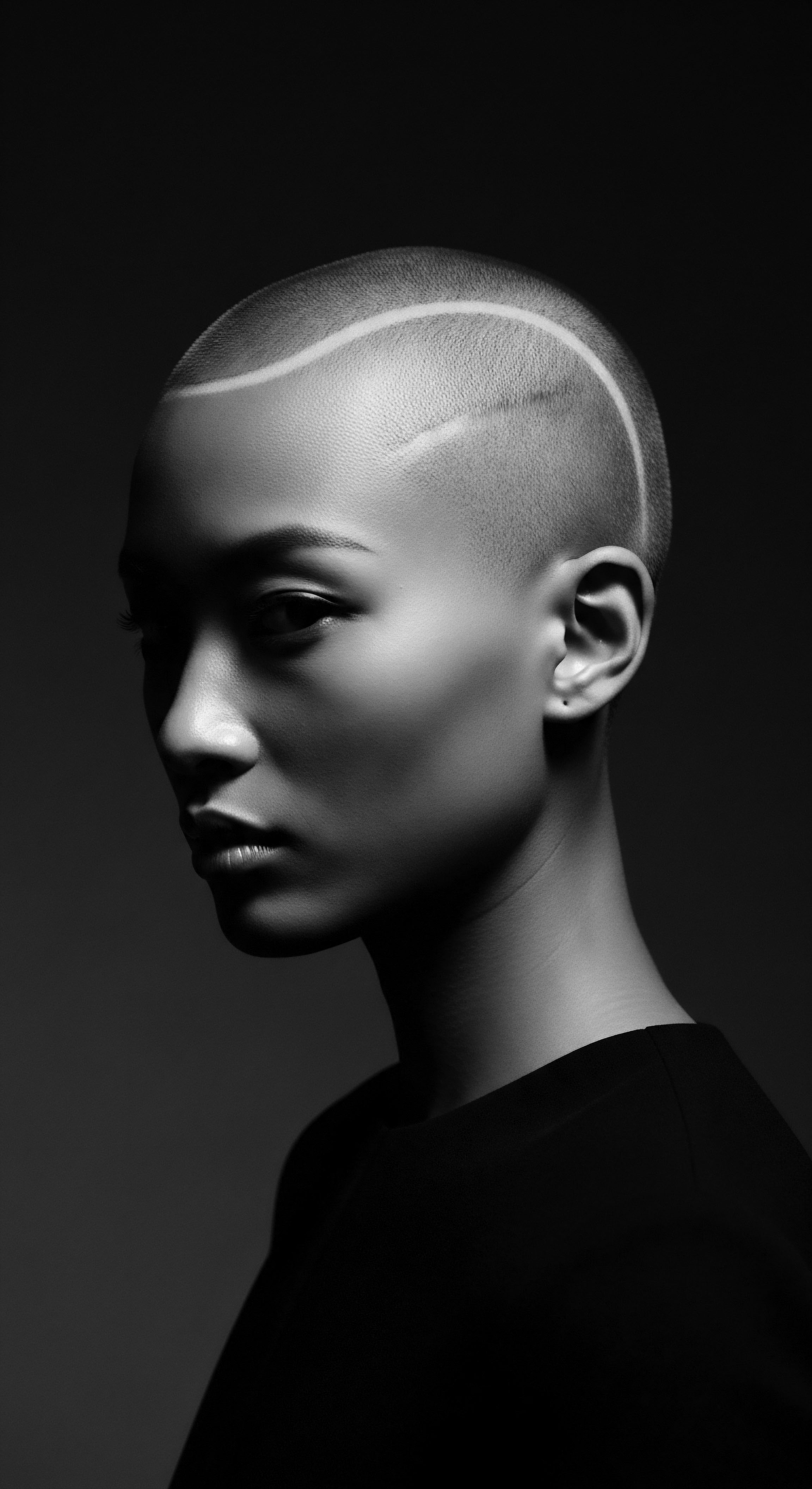
The Tools of Tradition and Their Modern Descendants
The tools used in traditional African hair practices were as innovative as the styles they created. Combs, for example, have a history stretching back 7,000 years, with archaeological finds from ancient Kush and Kemet (Sudan and Egypt) revealing elaborately carved wooden, bone, and ivory combs. These were not just functional items; they were regarded as sacred, adorned with symbols of tribal identity, rank, and spiritual meaning.
The “afro comb,” with its long, widely spaced teeth, designed to navigate the unique coils of textured hair, is a direct descendant of these ancient instruments. Its modern iterations, often with the “Black fist” symbol, became a powerful emblem of pride and political statement during the Civil Rights and Black Power movements of the 1960s.
Table ❉ Evolution of Hair Tools
| Traditional Tool Afro Comb (Ancient) |
| Historical Context and Use Carved from wood, bone, or ivory; used for detangling and styling, also as status symbols in ancient Kush and Kemet. |
| Modern Adaptation and Influence Wide-tooth combs and picks, still essential for detangling coiled hair, often bearing symbols of cultural pride. |
| Traditional Tool Threading Needles/Fibers |
| Historical Context and Use Used for hair threading (Irun Kiko, Akweley Waabii), a practice dating to the 15th century in West and Central Africa, promoting length retention. |
| Modern Adaptation and Influence Modern hair extensions and specialized needles used in techniques like crochet braids, maintaining some traditional aesthetic principles. |
| Traditional Tool Heated Stones/Early Irons |
| Historical Context and Use Used sparingly for smoothing hair, a pre-industrial method of achieving a straighter look, often with considerable risk. |
| Modern Adaptation and Influence Contemporary flat irons and blow dryers, offering thermal reconditioning, a direct, albeit refined, evolution of applying heat. |
| Traditional Tool The ingenuity of ancestral tools laid the groundwork for many of today's hair care implements. |
The adoption of traditional styling techniques in modern beauty, sometimes by those outside the culture, has sparked important conversations around cultural appropriation. While braids, locs, and cornrows are celebrated on runways and in popular media, their wearers of African descent have historically faced discrimination, sometimes being deemed “unprofessional” in academic or professional settings. This double standard highlights the continuing struggle for Black individuals to fully embrace their inherited hair practices without societal penalty, even as these practices become widespread beauty trends.
The aesthetic of volume and definition, a hallmark of many natural textured styles, directly influences contemporary desires for hair that appears full and vibrant. The meticulous sectioning, twisting, and braiding techniques used in traditional practices are mirrored in modern natural styling techniques aimed at enhancing curl definition and minimizing shrinkage. These practices, refined over centuries, are today taught and adapted in salons and through online communities, a testament to their enduring efficacy and beauty.

Relay
The continuity of African hair practices, from ancient communal rites to modern self-care regimens, forms a powerful relay of heritage. This enduring legacy extends beyond styling into the holistic care of textured hair, influencing contemporary understanding of hair health and problem-solving. The ancestral wisdom, deeply rooted in a profound connection to nature and community wellbeing, provides a robust framework for approaching hair care today, merging historical insight with modern scientific validation.
Traditional African societies viewed hair care as a ritual, a sacred act connected to spiritual energy and ancestral reverence. This perspective meant care was holistic, considering not just the strands but the entire being. The application of natural butters, herbs, and powders, often infused with specific intentions, was central to these regimens. Ingredients like shea butter, baobab oil, and chebe powder, used for millennia across different African tribes, stand as testaments to this ancestral pharmacopeia.
Chebe, for instance, made from the seeds of the Croton gratissimus shrub, has been used by the Basara tribe in Chad for centuries to promote length retention and hair luster, a time-consuming but revered practice. This ritual, passed down through generations, has found renewed popularity today as people seek natural, effective alternatives to chemical-laden products.
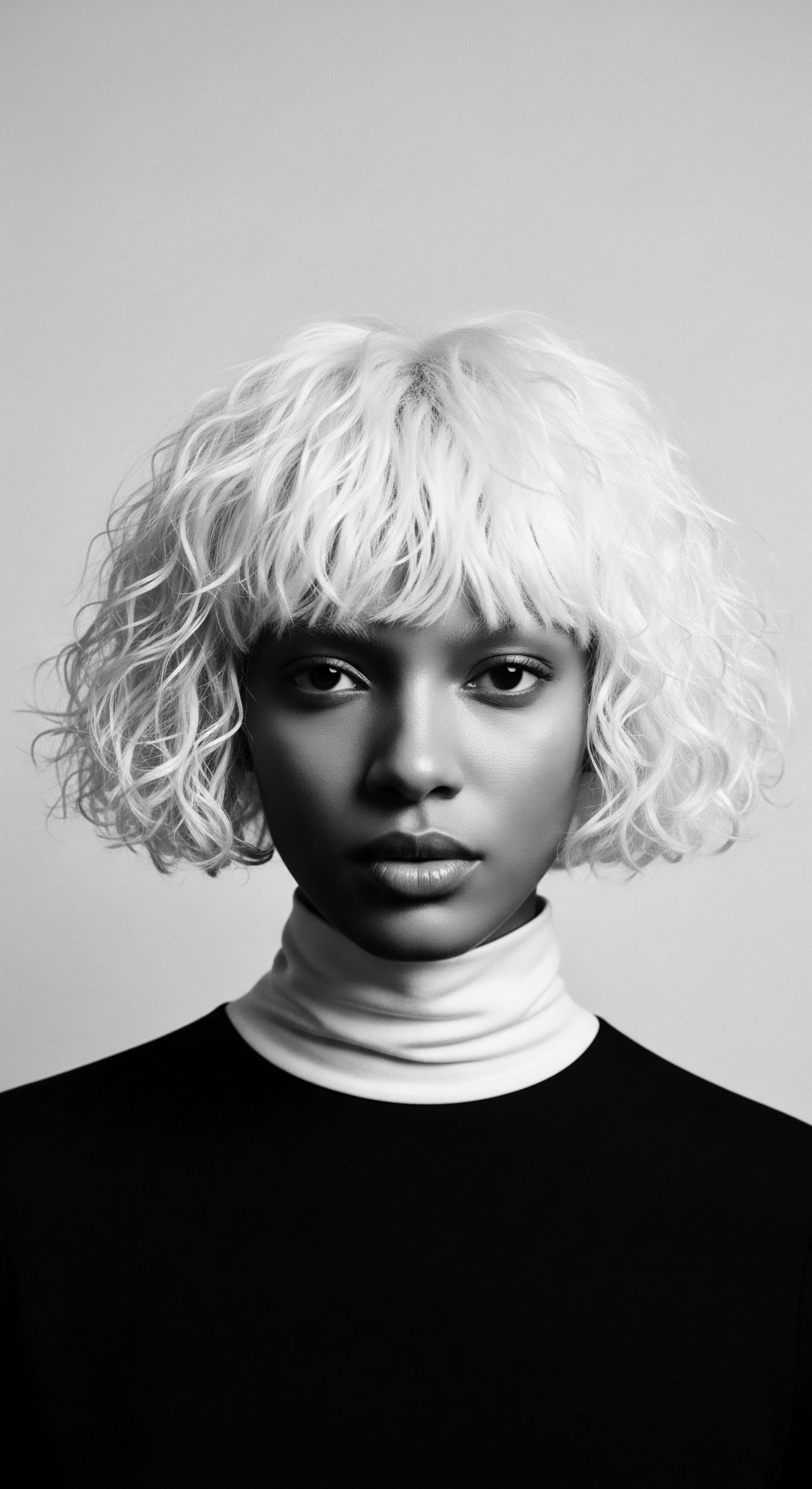
How Ancestral Wellness Principles Inform Modern Hair Health?
Modern hair wellness advocacy, particularly within the textured hair community, often echoes the holistic principles embedded in traditional African care. The emphasis on moisture retention, scalp health, and protective styling aligns closely with long-standing ancestral methods. Research highlights that Afro-textured hair is inherently prone to dryness and can be fragile.
This scientific observation validates the traditional focus on deep conditioning and sealing moisture with natural oils and butters. For example, the “liquid, oil, cream” (LOC) method, a popular modern regimen for sealing moisture, finds conceptual parallels in historical practices of layering natural emollients to nourish and protect hair.
The traditional understanding of hair’s fragility also influenced careful detangling practices. Finger detangling or using wide-tooth combs when hair was wet, as practiced by many Black women today, reflects an intuitive understanding of preventing mechanical damage to delicate strands. This approach minimizes breakage, supporting length retention, a constant concern for those with tightly coiled hair.
Ancient African remedies and care principles stand as vital blueprints for contemporary hair wellness.
The “natural hair movement,” gaining significant momentum since the 2000s, has seen a resurgence of interest in these ancestral practices. A 2017 study found that “millennial naturalistas” expressed significantly more positive attitudes toward textured hair than other women, signaling a shift towards embracing inherent hair patterns (Johnson et al. 2017).
This movement, though not always overtly political as its 1960s predecessor, undeniably carries a heritage of self-acceptance and a rejection of Eurocentric beauty standards that historically pathologized Black hair. This shift reflects a communal rediscovery of ancestral beauty ideals, valuing hair in its authentic, textured state.
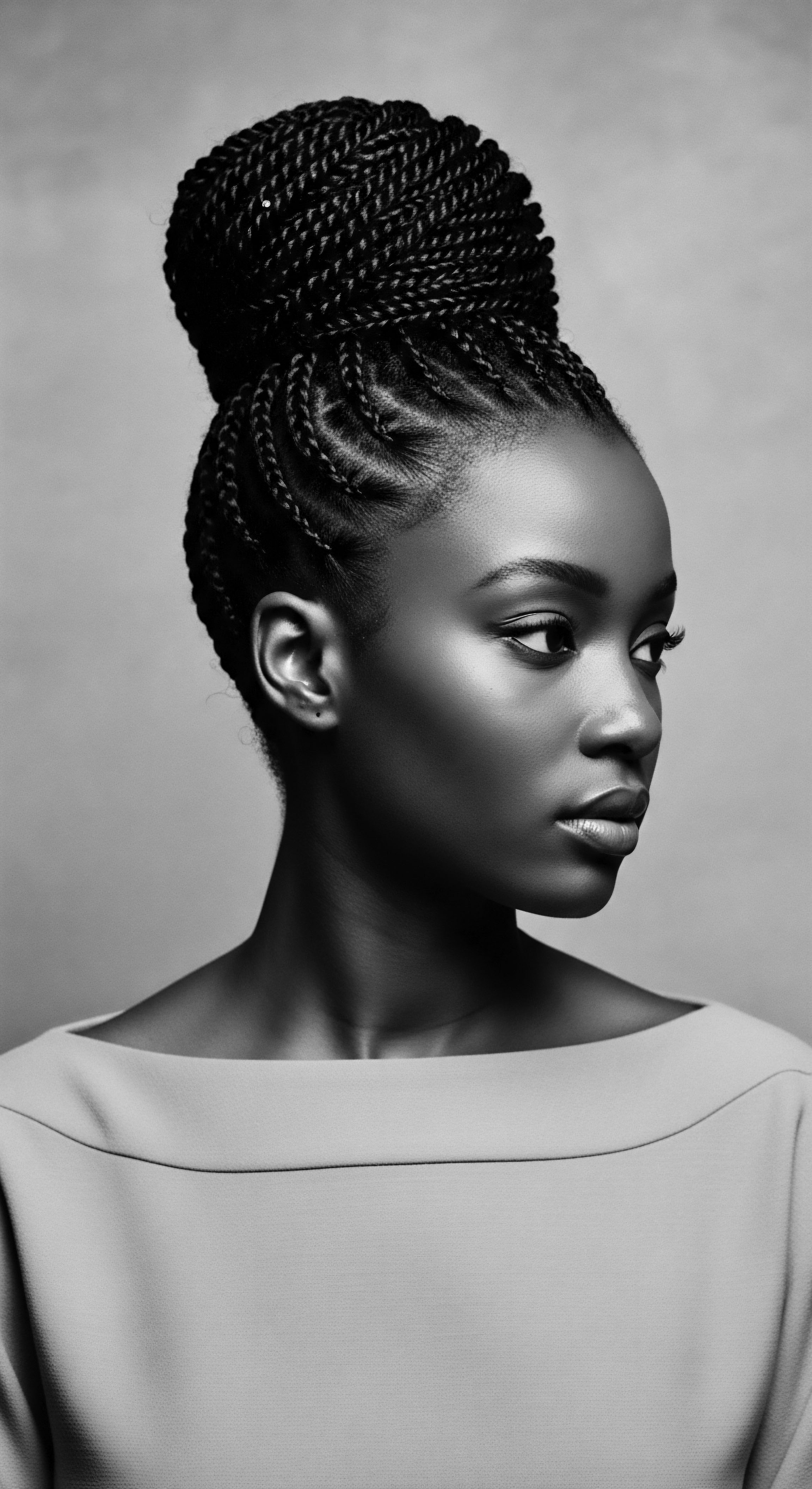
Protecting the Crown ❉ Nighttime Rituals and Their Ancestral Roots
The nightly wrapping of hair, a practice deeply ingrained in many African and diasporic communities, serves as a cornerstone of hair health and preservation. Bonnets, scarves, and headwraps, while modern accessories, are direct descendants of traditional practices where hair was protected during sleep, for ceremonial purposes, or to signify social status. This seemingly simple ritual guards against moisture loss, minimizes friction, and preserves styles, extending their life.
The belief that hair was a sacred part of the body, a point of entry for spiritual energy, meant it was handled with reverence, often covered when not being styled or adorned. This spiritual dimension underscored the protective nature of these rituals.
Here is a selection of traditional ingredients with enduring influence ❉
- Shea Butter ❉ Derived from the nuts of the African shea tree, prized for its moisturizing and protective qualities against harsh environmental conditions.
- Chebe Powder ❉ A blend of seeds, cloves, and other ingredients from Chad, historically used to promote length retention and hair luster.
- Aloe Vera ❉ Used across various ancient cultures for its conditioning and soothing properties, beneficial for scalp health.
The challenges faced by textured hair, such as dryness, breakage, and single-strand knots, have traditionally been addressed through these careful, consistent routines. The wisdom of preventing these issues, rather than merely treating them, formed the basis of ancestral hair care. Modern solutions often mirror these ancient strategies, emphasizing deep conditioning, gentle detangling, and protective styling to maintain the hair’s integrity. The contemporary market for products tailored to textured hair, overflowing with formulations designed to hydrate and strengthen, owes much to the long-understood needs of this unique hair type, a knowledge refined through generations of trial and adaptation.
| Historical Perception Hair as a marker of identity, status, spirituality in pre-colonial Africa. |
| Influence on Modern Beauty Standards Fuels the cultural significance and celebratory aspect of natural hair movement; inspires diverse styling. |
| Contemporary Relevance (Heritage Lens) Reclaiming ancestral pride through visible textured styles, connecting to lineage and community. |
| Historical Perception Forced shaving and denigration of Black hair during slavery/colonization. |
| Influence on Modern Beauty Standards Led to internalized racism and Eurocentric beauty standards; prompted a desire for straightened hair for assimilation. |
| Contemporary Relevance (Heritage Lens) The drive for natural hair acceptance in professional spaces, challenging systemic bias against textured hair. |
| Historical Perception Hair as a tool for resistance and coded communication. |
| Influence on Modern Beauty Standards Hair as a statement of political identity and empowerment; a symbol of defiance against oppressive norms. |
| Contemporary Relevance (Heritage Lens) Continuing activism (e.g. CROWN Act) to protect the right to wear natural hair without discrimination. |
| Historical Perception The complex past of textured hair continues to shape its present and future narratives within beauty and society. |
The relay of wisdom from past to present, where ancestral wellness principles meet modern scientific understanding, continues to sculpt the evolving standards of beauty for textured hair. This interplay underscores the profound connection between heritage and health, demonstrating that true radiance stems from a deep appreciation of one’s intrinsic origins.
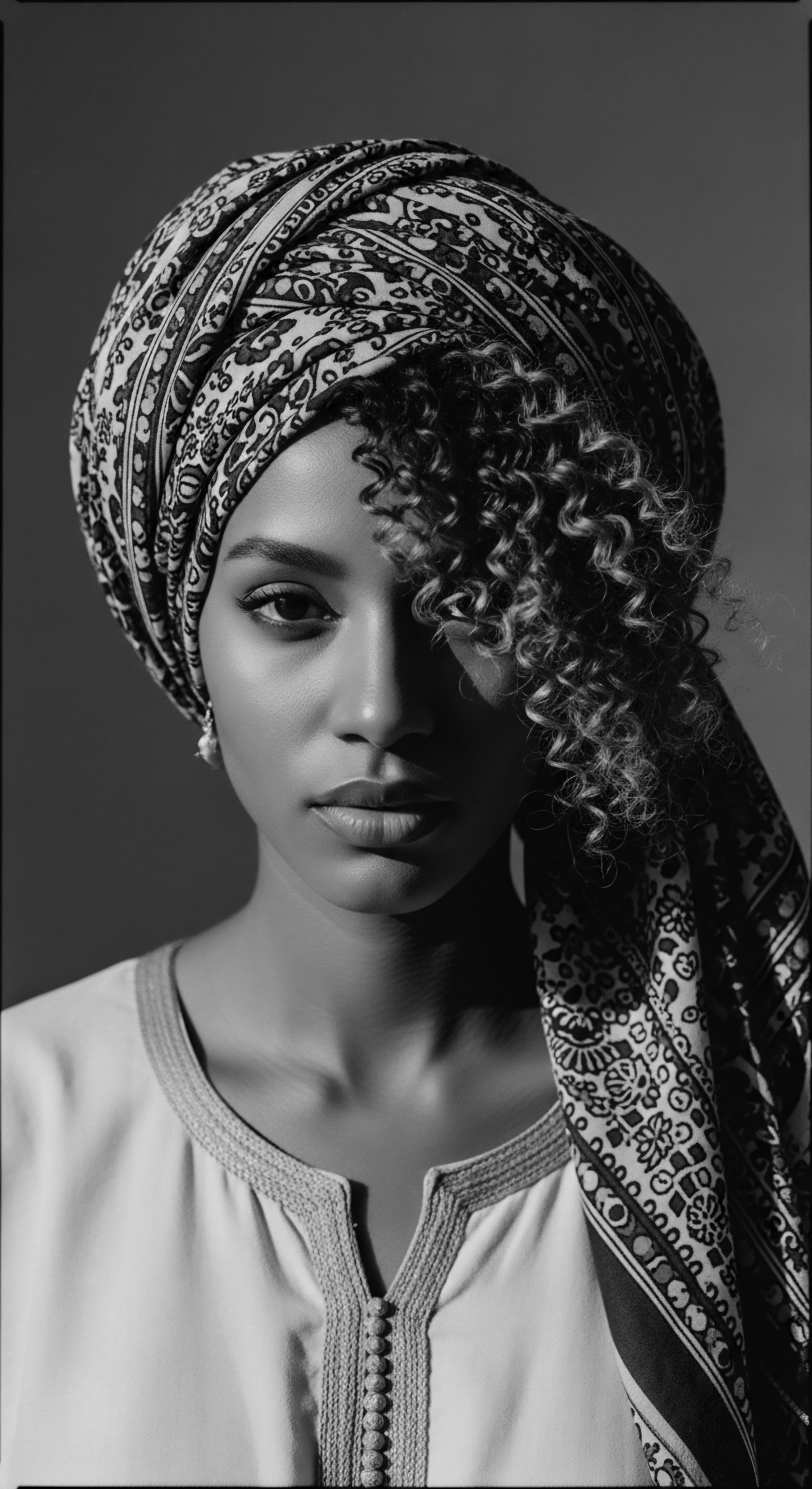
Reflection
The journey through the textured hair heritage, from the very biology of a strand to the intricate rituals of care and adornment, unveils a truth that echoes beyond fleeting trends. Traditional African hair practices do not simply influence modern beauty standards; they form their very bedrock, a deep, resonant hum beneath the surface of contemporary aesthetics. Each coil, every twist, carries the memory of ancestral hands, of communal gatherings, and of profound declarations of identity.
The modern resurgence of natural hair, the widespread appeal of braids and locs, and the growing market for specialized care products are not merely commercial phenomena. They are profound acknowledgments of a legacy, a living library of wisdom that demands to be seen, honored, and understood.
This exploration has sought to present textured hair not as a mere physical attribute, but as a dynamic cultural artifact, a testament to resilience, creativity, and the enduring power of heritage. The “Soul of a Strand” ethos guides us to recognize that the beauty of textured hair is inextricably linked to its story, its survival through eras of oppression, and its continuing role as a crown of self-expression. As we look towards the future, the influence of these ancestral practices will only deepen, grounding beauty in authenticity and celebrating the rich, diverse tapestry of human experience that begins, often, with a single, magnificent strand.

References
- Bryson, D. S. et al. (2020). Defying Damage ❉ Understanding Breakage in Afro-textured Hair. Cosmetics & Toiletries .
- Coderch, L. et al. (2021). A study shows that the differences between African, Caucasian and Asian hair are determined by their lipid distribution. Biotech Spain .
- Johnson, T. et al. (2017). The “Good Hair” Study Results. Perception Institute .
- Omotos, A. (2018). African Hairstyles – The “Dreaded” Colonial Legacy. Journal of Pan African Studies.
